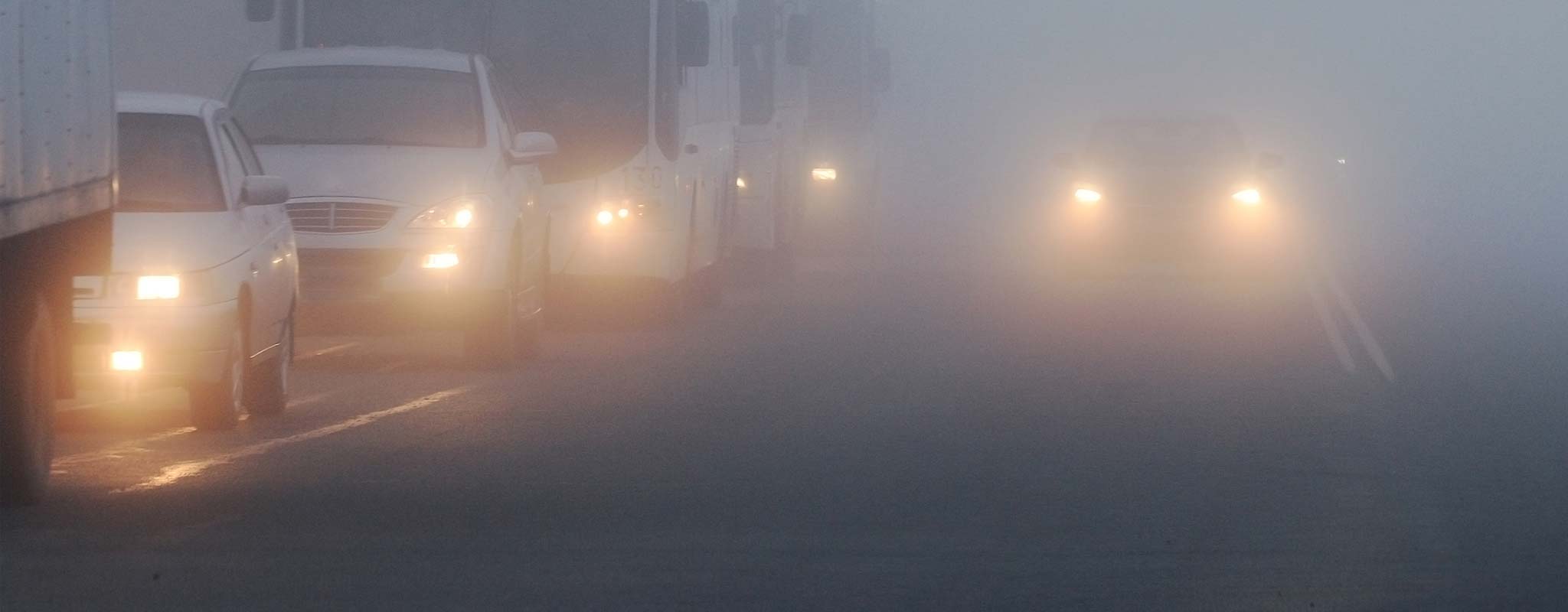How Do I Drive Safely in Fog?
Thick fog is a driving hazard in many areas of the Western U.S. In the Pacific Northwest, it comes up mostly in winter. In California’s Central Valley — where some roads have been called among the most dangerous in the world because of fog — the fog season starts with the first heavy rain in fall and goes until March.
How to Drive in Fog
Just like there are different types of snow, there are many types of fog. Oregon has freezing fog that can coat the road like black ice. California’s “tule fog” usually forms in low-lying areas that typically have bulrushes (tule, pronounced “too-lee”) growing in them. Tule fog can reduce visibility on a stretch of highway to only a few feet, while other areas are nearly clear.
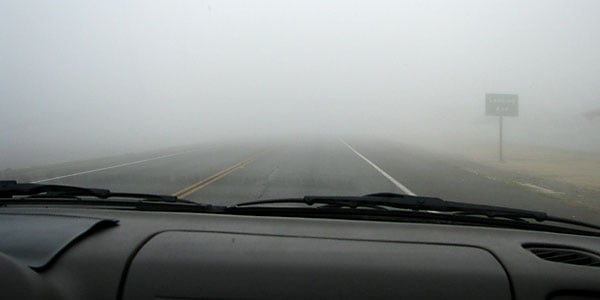
Photo by https://www.flickr.com/photos/emdot, under Creative Commons license https://creativecommons.org/licenses/by/2.0/legalcode
This is true of fog anywhere: You can be driving along with enough visibility and then suddenly go through a patch where you can barely see the road.
When fog’s an issue, here are tips to keep you safer on your drive.
- Slow down and turn off your cruise control. Most crashes happen because the driver’s going too fast for weather conditions.
- Drive with enough stopping space so you can stop in the distance you can see.
- Don’t use high-beam headlights. They won't shine through the fog but just reflect the light back in your eyes, making it worse for you and other drivers. Use low-beams.
- In really dense fog, use front fog lights in addition to your low-beams if you have them. NEVER drive using only your parking or fog lights. It’s illegal and unsafe. Use rear fog lights if you have them when visibility is less than around 300 feet.
- Fog lights should be turned off when visibility is normal. They can be distracting for oncoming drivers.
- Oregon law says fog lights must be turned off when within 500 feet of an oncoming vehicle and within 350 feet when following another vehicle.
- Minimize distractions. Turn off music and don’t talk on your cellphone, so you can listen for traffic you might not be able to see.
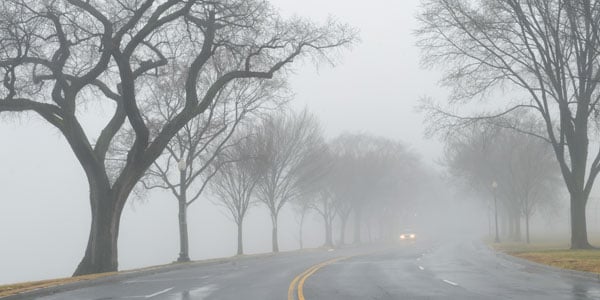
- Keep your headlights clean. Get in the habit of wiping them off whenever you fill your gas tank.
- Keep the windshield clear and use the defroster to avoid fogged windows.
- Keep on the alert for slow-moving or stopped vehicles. Slow down more when you see red taillights ahead.
- Avoid using your hazard lights while moving — other drivers may think you’ve stopped.
- Use the right edge of the road, white fog line or roadside reflectors as a guide to stay in your lane.
- In Oregon, a Dense Fog Advisory is issued when visibility is reduced to less than one-quarter mile. Check www.TripCheck.com.
- Be patient. Don’t change lanes or pass other vehicles unless you really have to, and NEVER try to pass long lines of traffic in fog.
- Don’t creep along; somebody else may crash into you. If visibility is extremely poor, exit the freeway or find a safe place to pull over. Some highways in California have signs that estimate road visibility and a 3-2-1 countdown pattern of reflective pavement markers to help motorists take exit ramps in heavy fog.
- If you need to stop and there’s no nearby exit, pull off the pavement as far as safely possible. Turn off your lights, set the emergency brake and take your foot off the brake to be sure your taillights aren’t lit up. Turn on your emergency flashers. Wait it out until conditions improve.
- Never stop in the travel lanes. If you can’t pull over, go slow and sound the horn occasionally.
What You Should Know about Fog Lights
Fog lights are designed to be used at low speed in fog, heavy mist, snow and other poor-visibility situations. They’re different from daytime running lights. They are an extra pair of lights mounted low on the vehicle, with the thinking that fog doesn’t settle on the road surface but hovers 12 to 18 inches above it. They aim light into this layer of fog-free air. They also point to the right enough that the driver can see the solid, white “fog line” at the road edge as a guide.
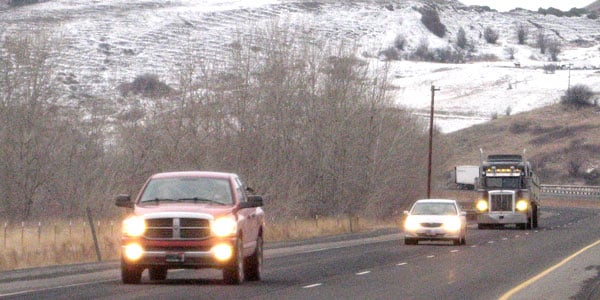
Photo: Oregon Department of Transportation https://commons.wikimedia.org/wiki
The rules on using auto fog lights — also known as fog lamps — vary by state. The main thing to know: you can’t use fog lights in a way that creates glare for other drivers. They have to be pointed and used so they won’t interfere with visibility for another driver within 25 feet. Here are specifics.
Basic Fog Light Rules for Western States
Each year, over 38,700 vehicle crashes occur in fog. Over 600 people are killed and more than 16,300 people are injured in these crashes annually. Treat low visibility driving with respect.
Get more winter driving how-tos in our ebook 19 Winter Driving Resources You Can’t Do Without. See real-time road conditions for Western states here.
Get More Driving Tips
What you need to know
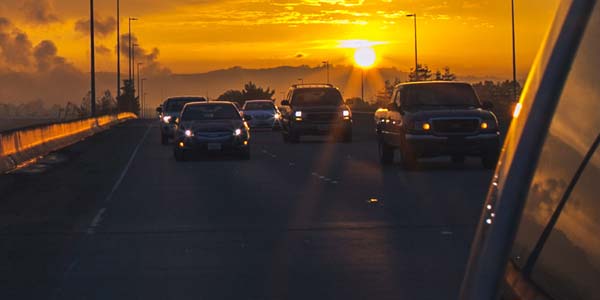
Not to Worry: 27 Tips for Safest Night Driving
Nighttime crash rates are higher than daytime. Here are 27 tips to help you reach your destination safely during nighttime travels.
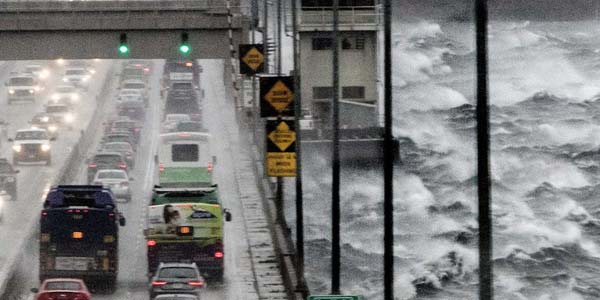
How to Drive Safely in High Winds
Here’s how to stay safer on the road when you’re driving in high or gusting winds, especially if you’re driving a pickup, SUV, RV, van or bus.
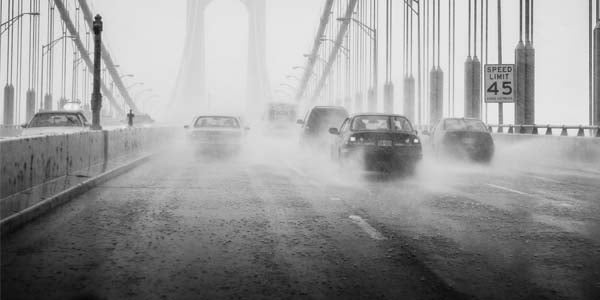
10 Safety Tips for Driving in the Rain
Driving in the rain can be unsafe or even downright dangerous. These safety tips for driving in the rain could help protect you from unwanted accidents.

